
Osu Kannon: The Heart of Nagoya's Cultural Heritage
Explore Osu Kannon, Nagoya’s cultural hub, where historic temples meet bustling shopping streets and vibrant local events make every visit unforgettable.
Osu Kannon is a vibrant neighborhood in Nagoya, Japan, known for its rich cultural heritage and bustling shopping arcades. At its center stands the iconic Osu Kannon Temple, a historic Buddhist temple that dates back to the early 14th century. The temple is a serene oasis amidst the urban hustle, where visitors can experience traditional Japanese rituals and admire ancient artifacts. Just a short stroll away, you'll find the Osu Shopping Street, a lively network of covered arcades filled with over 1,200 shops. From vintage clothing and quirky collectibles to delicious street food and traditional crafts, the market offers a unique blend of the old and new. The energy here is palpable, with locals and tourists alike exploring the myriad of stalls and boutiques. Osu Kannon is also home to a variety of cultural events throughout the year, including traditional festivals and flea markets. These events provide a unique glimpse into the local culture and are a great way to immerse yourself in the community. Whether you're a history buff, a shopping enthusiast, or simply looking to soak in the local atmosphere, Osu Kannon is a must-visit destination in Nagoya.
Local tips in Osu Kannon
- Visit the Osu Kannon Temple early in the morning to avoid the crowds and enjoy a peaceful experience.
- Bring cash, as many small shops and street vendors do not accept credit cards.
- Don’t miss the monthly flea market on the 18th and 28th for unique finds and great deals.
- Wear comfortable shoes as you'll be doing a lot of walking through the shopping streets and temple grounds.
- Try the local street food, especially the taiyaki (fish-shaped cake) and karaage (Japanese fried chicken).
Osu Kannon: The Heart of Nagoya's Cultural Heritage
Osu Kannon is a vibrant neighborhood in Nagoya, Japan, known for its rich cultural heritage and bustling shopping arcades. At its center stands the iconic Osu Kannon Temple, a historic Buddhist temple that dates back to the early 14th century. The temple is a serene oasis amidst the urban hustle, where visitors can experience traditional Japanese rituals and admire ancient artifacts. Just a short stroll away, you'll find the Osu Shopping Street, a lively network of covered arcades filled with over 1,200 shops. From vintage clothing and quirky collectibles to delicious street food and traditional crafts, the market offers a unique blend of the old and new. The energy here is palpable, with locals and tourists alike exploring the myriad of stalls and boutiques. Osu Kannon is also home to a variety of cultural events throughout the year, including traditional festivals and flea markets. These events provide a unique glimpse into the local culture and are a great way to immerse yourself in the community. Whether you're a history buff, a shopping enthusiast, or simply looking to soak in the local atmosphere, Osu Kannon is a must-visit destination in Nagoya.
Iconic landmarks you can’t miss
Osu-kannon Temple
Discover the serene beauty of Osu Kannon Temple, a historic Buddhist site surrounded by vibrant shopping and local culture in Nagoya, Japan.

Osu Shōtengai Shopping Street
Discover the lively Osu Shōtengai Shopping Street in Nagoya, where tradition meets modernity in a vibrant shopping and dining experience.

Banshoji
Discover the serene beauty and rich cultural heritage of Banshoji Temple, a must-visit Buddhist temple in Nagoya, Japan, offering tranquility and stunning architecture.
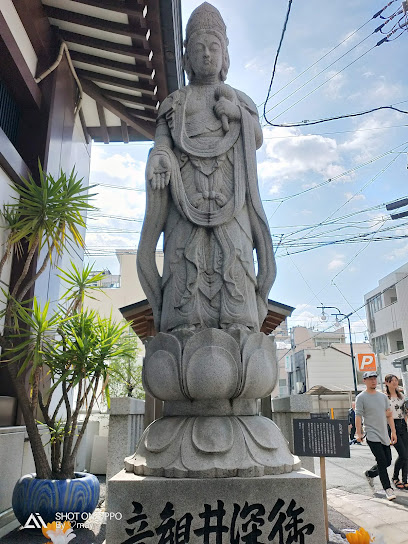
Daikoin
Experience the serene beauty and rich cultural heritage of Daikoin Temple in Nagoya, a peaceful retreat amid the city's vibrancy.
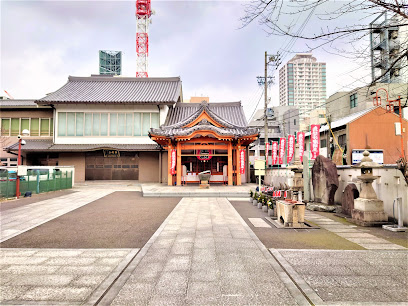
Osu Kannon-dori Shōtengai Shopping Street
Explore the colorful Osu Kannon-dori Shōtengai Shopping Street in Nagoya, a hub of shopping, local cuisine, and cultural experiences.
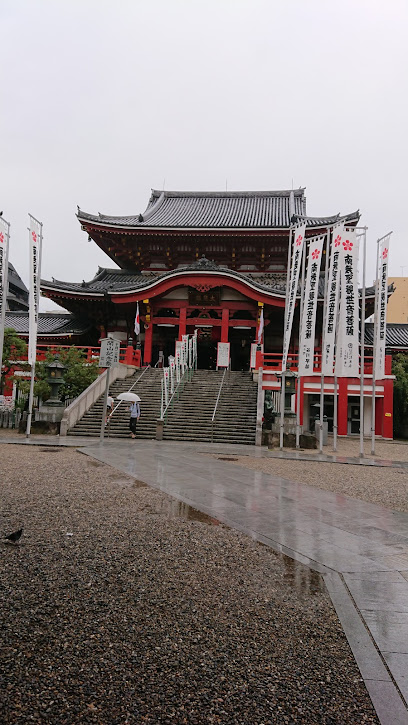
Akamon Dori Shopping Street
Explore Akamon Dori Shopping Street in Nagoya for a perfect blend of culture, shopping, and delectable local cuisine.
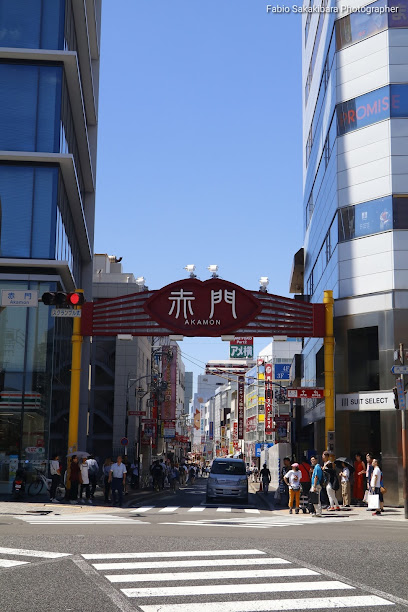
大須観音 自動車祈祷殿
Experience the serene beauty of Daikozan Jorakuji Temple, a hidden treasure in Nagoya, rich in history, spirituality, and tranquility.

紫雲殿
Explore Kōkō-ji Temple in Nagoya: A serene Buddhist sanctuary blending history, stunning architecture, and tranquil gardens.

人形供養塔
Experience the serene beauty of this Buddhist temple in Nagoya, a peaceful haven that embodies Japan's rich spiritual and cultural heritage.

大須観音 人形塚
Discover the serene beauty and rich cultural heritage of Daion-ji Temple in Nagoya, a tranquil escape for spiritual seekers and nature lovers alike.

Unmissable attractions to see
Nagoya City Science Museum
Explore the fascinating world of science and technology at the Nagoya City Science Museum, featuring interactive exhibits and a stunning planetarium.
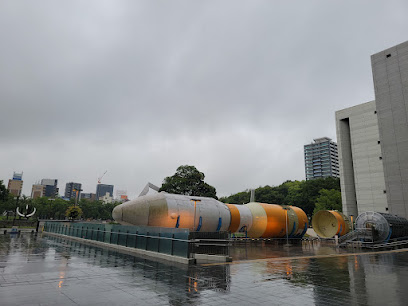
Osu-kannon Temple
Discover the serene beauty and vibrant culture of Osu Kannon Temple, a spiritual gem in the heart of Nagoya, Japan.

Shirakawa Park
Discover the tranquility of Shirakawa Park in Nagoya, where lush greenery and family-friendly attractions await visitors seeking relaxation and recreation.

Nagoya City Art Museum
Explore the Nagoya City Art Museum, a cultural gem showcasing modern and contemporary art in a stunning architectural setting.

Banshoji
Discover the serene beauty and rich cultural heritage of Banshoji, a must-visit Buddhist temple in the heart of Nagoya, Japan.

Osu Park
Discover the serene beauty and vibrant culture of Osu Park in Nagoya, a perfect blend of nature and community amidst the urban landscape.

Shintenchi Dori Shopping Street
Experience the vibrant mix of shopping, dining, and culture at Shintenchi Dori Shopping Street in Nagoya, a must-visit for every traveler.

Akamon Dori Shopping Street
Experience the vibrant culture of Nagoya at Akamon Dori Shopping Street, a shopping paradise filled with local flavors and unique finds.

Essential places to dine
Solo Pizza
Discover authentic Italian flavors at Solo Pizza in Nagoya—where every slice tells a story!
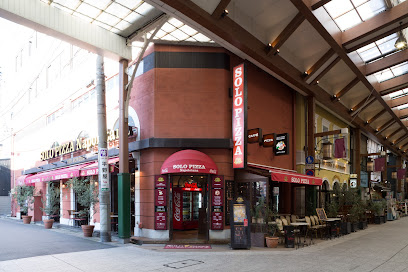
Osso Brasil
Discover authentic Brazilian flavors at Osso Brasil in Nagoya – a culinary journey through Pan-Latin cuisine awaits!

Pizzeria Braceria CESARI!!
Discover authentic Italian flavors at Pizzeria Braceria CESARI in Nagoya - where every pizza tells a delicious story.

Kitchen Tokyo
Discover Kitchen Tokyo: Where Western flavors meet Japanese flair in Nagoya's Osu district.

Moumoutei
Experience the best of Yakiniku at Moumoutei in Nagoya - where tradition meets flavor in every grilled bite.

Mukashinoyabaton
Discover authentic Japanese oden at Mukashinoyabaton in Nagoya's Osu district – where tradition meets flavor.
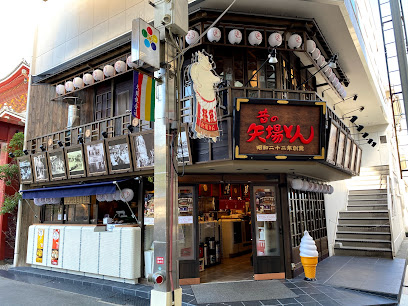
Nagomidori
Experience the authentic taste of Japan at Nagomidori, where traditional izakaya dining meets flavorful yakitori and kushiage in the heart of Nagoya.

SMASH HEAD
Indulge in delicious burgers at SMASH HEAD in Nagoya's vibrant Osu district – where flavor meets creativity!

Oumanooyako
Experience authentic Japanese izakaya culture at Oumanooyako in Nagoya—delicious food, vibrant atmosphere, perfect for any occasion.

Les Anges
Experience authentic French cuisine at Les Anges in Nagoya's Osu district - where culinary artistry meets warm hospitality.

Markets, malls and hidden boutiques
Komehyo Nagoya Main Store Main Building
Explore Komehyo Nagoya Main Store for unique thrift finds, vintage fashion, and collectibles in the heart of Nagoya's vibrant Osu district.

Alice on Wednesday Nagoya
Explore Alice on Wednesday in Nagoya—an enchanting fashion accessories store with delightful desserts and a whimsical atmosphere.

N.CAT No.1 Korea Accessory
Explore N.CAT No.1 Korea Accessory in Nagoya for unique Korean gifts and accessories that celebrate culture and creativity.

韓流商店ワンダケイ
Discover the heartbeat of K-pop and Korean culture at Wonder K Store, a must-visit gift shop in Nagoya, filled with unique merchandise and beauty products.

THANK YOU MART Nagoya Osu
Explore a trendy youth clothing store in Nagoya's Osu district, offering unique fashion finds, accessories, and sustainable clothing options.

Osu Omiyage Company
Explore the best of Nagoya's local culture at Osu Omiyage Company, where unique souvenirs and traditional craftsmanship await.

AKKY
Discover AKKY in Nagoya for exceptional duty-free shopping with a diverse selection of international products and local treasures.

Osu Kannon-dori Shōtengai Shopping Street
Discover the vibrant Osu Kannon-dori Shōtengai Shopping Street, a blend of shopping, street food, and cultural heritage in the heart of Nagoya, Japan.

UNCLE Bee
Explore the eclectic charm of UNCLE Bee, Nagoya's premier antique and vintage clothing store, where every item tells a unique story.

Panorama Store
Explore the vibrant second-hand fashion scene at Panorama Store in Nagoya's Osu district, where unique vintage treasures await every traveler.

Essential bars & hidden hideouts
Bar
Discover the vibrant bar scene in Nagoya, where local charm meets refreshing drinks in a cozy atmosphere perfect for unwinding.
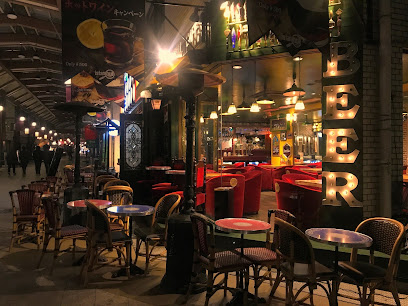
amusement Cafe-Bar WATER7
Discover the perfect blend of relaxation and socializing at Nagoya's WATER7 café-bar, a must-visit for all tourists seeking a memorable experience.

istanbul CAFE
Experience the vibrant charm of Istanbul Cafe in Osu, Nagoya, where Turkish culture meets delightful flavors in an inviting atmosphere.

Banshoji Bar
Discover Banshoji Bar in Nagoya - A modern izakaya experience with exquisite flavors and vibrant nightlife awaits you.

and you
Discover the warmth of Irish hospitality at 'And You' Irish Pub in Nagoya, where authentic cuisine meets a lively atmosphere.

One Handred
Experience the vibrant nightlife of Nagoya at One Hundred, a cozy bar offering expertly crafted cocktails in the heart of the Osu district.

Eden
Discover Eden in Nagoya for an unforgettable nightlife experience filled with karaoke, live events, and a vibrant atmosphere.

考尺° PINQ
Experience the essence of Nagoya at考尺° PINQ, where exquisite wines and delightful dishes create unforgettable moments.

BAR。
Explore the vibrant nightlife at BAR。 in Nagoya's Osu district, where friendly ambiance meets a diverse drink selection.
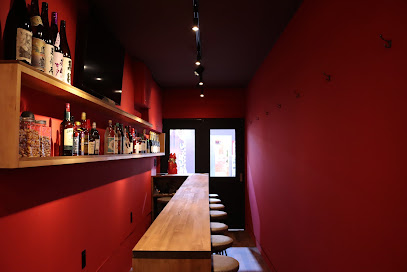
Guinness Dining bar
Discover the lively atmosphere of Guinness Dining Bar in Nagoya, where exceptional drinks meet delicious cuisine in a vibrant setting.

Local Phrases
-
- Helloこんにちは
[kon-ni-chi-wa] - Goodbyeさようなら
[sa-yo-u-na-ra] - Yesはい
[ha-i] - Noいいえ
[i-i-e] - Please/You're welcomeどうぞ
[do-u-zo] - Thank youありがとう
[a-ri-ga-to-u] - Excuse me/Sorryすみません
[su-mi-ma-se-n] - How are you?お元気ですか?
[o-ge-n-ki-de-su-ka] - Fine. And you?元気です。あなたは?
[ge-n-ki-de-su. a-na-ta-wa?] - Do you speak English?英語を話せますか?
[e-i-go-wo-ha-na-se-ma-su-ka] - I don't understandわかりません
[wa-ka-ri-ma-se-n]
- Helloこんにちは
-
- I'd like to see the menu, pleaseメニューを見せてください
[me-ni-u-wa-mi-se-te-ku-da-sa-i] - I don't eat meat肉は食べません
[ni-ku-wa-ta-be-ma-se-n] - Cheers!乾杯!
[ka-m-pa-i] - I would like to pay, pleaseお会計をお願いします
[o-ka-i-ke-i-wo-o-ne-ga-i-shi-ma-su]
- I'd like to see the menu, pleaseメニューを見せてください
-
- Help!助けて!
[ta-su-ke-te] - Go away!去って!
[sa-t-te] - Call the Police!警察を呼んで!
[ke-i-sa-tsu-o-yo-n-de] - Call a doctor!医者を呼んで!
[i-sha-o-yo-n-de] - I'm lost道に迷いました
[mi-chi-ni-ma-ya-wa-i-ma-shi-ta] - I'm ill具合が悪いです
[gu-a-i-ga-wa-ru-i-de-su]
- Help!助けて!
-
- I'd like to buy......を買いたいです
[...wo-ka-i-ta-i-de-su] - I'm just looking見てるだけです
[mi-te-ru-da-ke-de-su] - How much is it?いくらですか?
[i-ku-ra-de-su-ka] - That's too expensiveそれは高すぎます
[so-re-wa-ta-ka-su-gi-ma-su] - Can you lower the price?値段を下げてもらえますか?
[ne-da-n-wo-sa-ge-te-mo-ra-e-ma-su-ka]
- I'd like to buy......を買いたいです
-
- What time is it?今何時ですか?
[i-ma-na-n-ji-de-su-ka] - It's one o'clock一時です
[i-chi-ji-de-su] - Half past (10)十時半です
[ju-u-ji-ha-n-de-su] - Morning朝
[a-sa] - Afternoon午後
[go-go] - Evening夕方
[yu-u-ga-ta] - Yesterday昨日
[ki-n-o-u] - Today今日
[kyo-u] - Tomorrow明日
[a-shi-ta] - 1一
[i-chi] - 2二
[ni] - 3三
[sa-n] - 4四
[shi] - 5五
[go] - 6六
[ro-ku] - 7七
[na-na] - 8八
[ha-chi] - 9九
[ku] - 10十
[ju-u]
- What time is it?今何時ですか?
-
- Where's a/the...?...はどこですか?
[...wa-do-ko-de-su-ka] - What's the address?住所は何ですか?
[ju-u-sho-wa-na-ni-de-su-ka] - Can you show me (on the map)?地図で見せてもらえますか?
[chi-zu-de-mi-se-te-mo-ra-e-ma-su-ka] - When's the next (bus)?次の(バス)はいつですか?
[tsu-gi-no-(ba-su)-wa-i-tsu-de-su-ka] - A ticket (to ....)(....)へのチケット
[(...)-he-no-chi-ke-t-to]
- Where's a/the...?...はどこですか?
History of Osu Kannon
-
The history of Osu Kannon dates back to 1333 when the Osu Kannon Temple was established. Originally built in the city of Kōfu, it was moved to its current location in Nagoya in 1612. The temple enshrines the Kannon, the Buddhist goddess of mercy, and has since become a spiritual center for the local community and a symbol of Nagoya's rich religious heritage.
-
During the Edo Period (1603-1868), Osu Kannon became a thriving pilgrimage site. It attracted visitors from all over Japan, drawn by the temple's reputation for miraculous healings. The area around the temple developed into a bustling marketplace, with vendors selling traditional crafts and religious souvenirs, contributing to the local economy and culture.
-
The Osu Kannon Temple suffered significant damage during World War II, particularly during the air raids on Nagoya in 1945. The temple was rebuilt in 1950, and this reconstruction marked a revitalization of the area. Despite the destruction, community efforts to restore the temple and its surroundings played a vital role in preserving local culture and history.
-
In the latter half of the 20th century, Osu Kannon transformed into a lively cultural district. The area became known for its eclectic mix of shops, theaters, and museums, reflecting Nagoya's vibrant urban culture. Events such as the Osu Kannon Temple's annual festivals continue to draw crowds, showcasing local traditions, food, and art.
-
Today, Osu Kannon is not only a spiritual site but also a hub for shopping and entertainment. The Osu Shopping District, located nearby, features a mix of traditional and modern stores, attracting both locals and tourists. The juxtaposition of historical architecture and contemporary commercialism illustrates Nagoya's dynamic evolution while honoring its past.
Osu Kannon Essentials
-
Osu Kannon is conveniently located in Nagoya and can be accessed from various neighborhoods. From Nagoya Station, take the Higashiyama Line (light blue) toward Fujigaoka and get off at Osu Kannon Station. The journey takes approximately 10 minutes. Alternatively, if you're near Sakae, you can take the Meitetsu Seto Line from Sakae Station directly to Osu Kannon Station. Buses also connect Osu Kannon with other parts of the city, making it accessible from places like Kanayama and Fushimi.
-
Osu Kannon is a compact area that is best explored on foot. The neighborhood is pedestrian-friendly, with many shops, temples, and eateries within walking distance. For those who prefer cycling, bike rentals are available nearby, allowing you to explore the area at your own pace. Public transport options include buses and the subway, with Osu Kannon Station being the main hub. Taxis are also available, but they can be more expensive.
-
Osu Kannon is generally a safe neighborhood for tourists, but standard precautions should be taken. Petty crime, such as pickpocketing, can occur in crowded areas, especially during festivals or events. While there are no specific high-crime areas targeting tourists, it is advisable to avoid poorly lit streets at night and keep personal belongings secure.
-
In case of emergencies, dial 110 for police and 119 for fire or medical services in Japan. There are several hospitals and clinics around Osu Kannon for urgent medical care. It is also recommended to have travel insurance for additional peace of mind. For minor health issues, pharmacies are readily available throughout the neighborhood.
-
Fashion: Do dress modestly, especially when visiting temples. Avoid wearing overly revealing clothing. Religion: Do respect local customs, such as removing shoes when entering a temple. Public Transport: Do give up your seat for elderly passengers and keep noise to a minimum. Don't eat or drink on public transport. Greetings: Do use a slight bow when greeting locals; a handshake is also acceptable. Eating & Drinking: Do try local street food and offer thanks to vendors. Don't waste food or leave a mess.
-
To experience Osu Kannon like a local, visit the Osu Shopping District, where you can find everything from vintage clothing to unique souvenirs. Engage with shop owners, who are often friendly and eager to share stories about their products. Don't miss the Osu Kannon Temple, especially during festivals when the area comes alive with stalls and performances. For a local dining experience, seek out small izakayas (Japanese pubs) in the backstreets, where you can enjoy authentic Japanese cuisine.
Nearby Cities to Osu Kannon
-
Things To Do in Kyoto
-
Things To Do in Nara
-
Things To Do in Osaka
-
Things To Do in Kanazawa
-
Things To Do in Tokyo
-
Things To Do in Hiroshima
-
Things To Do in Fukuoka
-
Things To Do in Pohang
-
Things To Do in Ulsan
-
Things To Do in Gyeongju
-
Things To Do in Busan
-
Things To Do in Andong
-
Things To Do in Daegu
-
Things To Do in Suncheon
-
Things To Do in Daejeon








